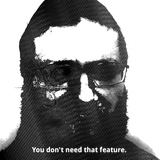>>105759612 (OP)
**Bitmap**, **TTF (TrueType Font)**, and **OTF (OpenType Font)** are different font formats used for rendering text in digital environments. Here's a concise comparison:
### **Bitmap Fonts**
- **Definition**: Raster-based fonts stored as pixel images for specific sizes and resolutions.
- **Characteristics**:
- Fixed sizes (e.g., 8px, 16px); not scalable without quality loss.
- Each glyph is a predefined pixel grid, optimized for specific displays.
- Small file size, fast rendering.
- **Use Cases**: Early computer displays, retro games, low-resolution screens, or pixel art.
- **Pros**:
- Precise control over pixel-level appearance.
- Efficient for small, fixed-size text.
- **Cons**:
- Not scalable; looks pixelated when resized.
- Limited flexibility for modern displays.
- **File Extensions**: `.bdf`, `.pcf`, `.fon`.
### **TTF (TrueType Font)**
- **Definition**: Vector-based font format developed by Apple and Microsoft in the late 1980s.
- **Characteristics**:
- Scalable without quality loss, using mathematical curves (Bézier curves).
- Includes hinting instructions for better rendering at small sizes on screens.
- Supports basic typographic features (e.g., kerning, ligatures).
- **Use Cases**: General-purpose fonts for operating systems, applications, and printing.
- **Pros**:
- Widely supported across platforms.
- Good balance of simplicity and functionality.
- **Cons**:
- Limited advanced typographic features compared to OTF.
- Larger file sizes for complex fonts.
- **File Extension**: `.ttf`.





